
Jennifer Cook-Chrysos/Whitehead Institute
Intro to RNA Biology: Cartoon Edition
This story is part of our series, Sculptors of the Cell: RNA research at Whitehead Institute: RNA Research at Whitehead Institute. Click here to see all stories in this collection.
DNA contains the instructions for how to build everything in our bodies. Each of your cells contains a copy of your DNA—like a set of the blueprints. Parts of these instructions are carried out as needed in different cells.
Typically, the instructions in the DNA blueprints are followed to build different proteins. Proteins do much of the work needed to keep the body functioning. At any given moment, one cell might be following the instructions for how to make an immune protein to defend the body from invaders like viruses while another is making a protein that helps the stomach digest food.
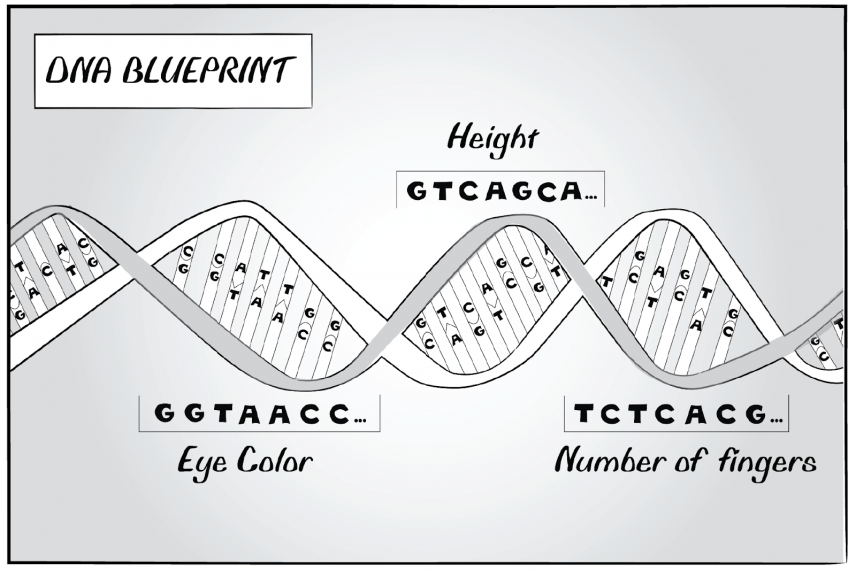
Jennifer Cook-Chrysos/Whitehead Institute
Generally, DNA is kept inside of the nucleus, where there is a central blueprint library for the whole cell. However, proteins get built in a different part of the cell. How do the instructions for the proteins get transmitted from the DNA blueprints to where the proteins are actually built? They are carried in the form of messenger RNA, or mRNA. Each mRNA contains a copy of a specific blueprint from the larger DNA library. It carries this blueprint out into the cell, where proteins are made. (mRNAs are not the only kind of RNA. There are lots of other types that do other things, and we’ll say more about them later on!)
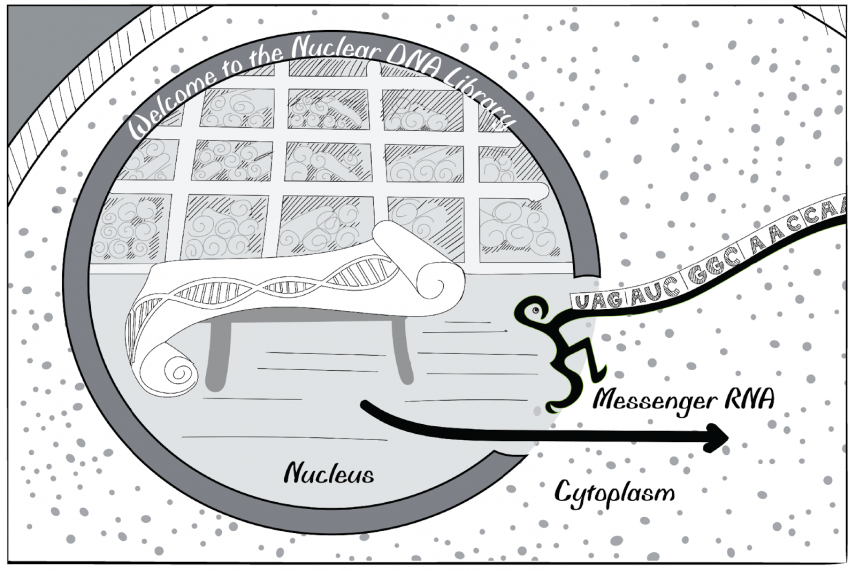
Jennifer Cook-Chrysos/Whitehead Institute
The mRNA is created in a process called transcription. An enzyme called RNA polymerase travels along the DNA strand, bringing in complementary RNA building blocks to create a “transcript” of the information contained in the DNA. The resulting molecule is an RNA strand with a mission: to convey its message to the part of the cell that creates proteins.
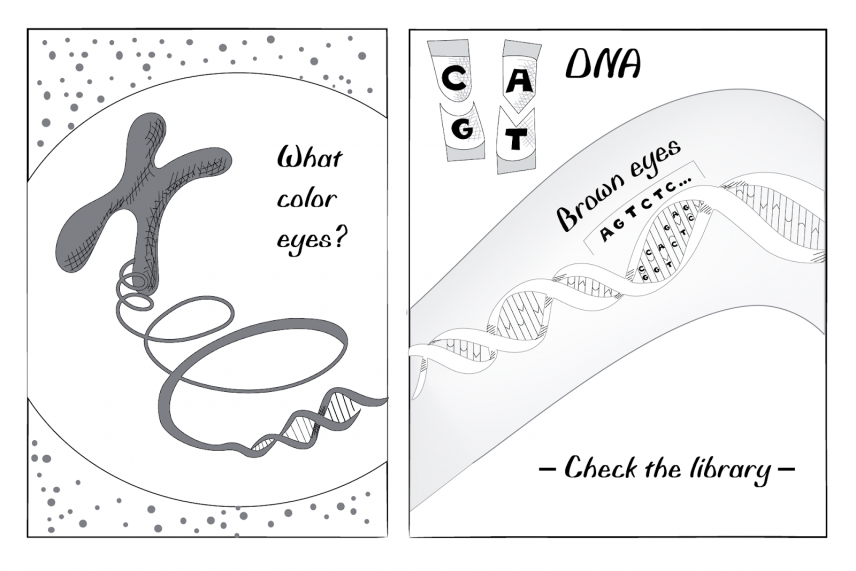
Jennifer Cook-Chrysos/Whitehead Institute
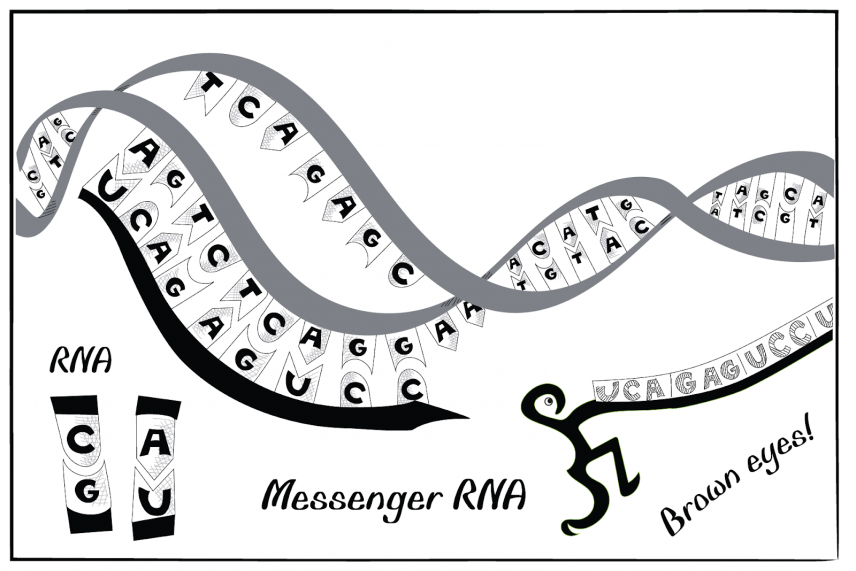
Jennifer Cook-Chrysos/Whitehead Institute
Once the transcript is created, it must undergo a few modifications to be ready for translation (the process by which the contents of the mRNA are read by a molecular machine called a ribosome and translated into a sequence of protein building blocks called amino acids.)
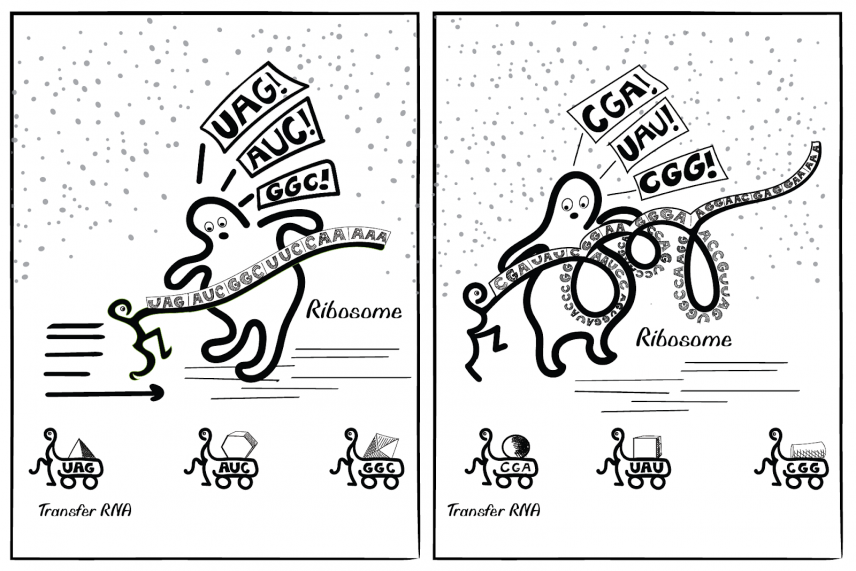
Jennifer Cook-Chrysos/Whitehead Institute
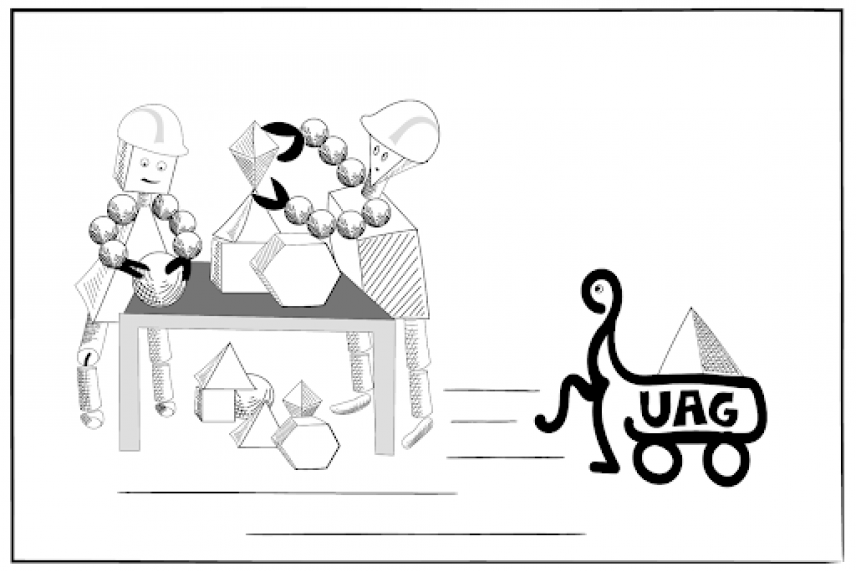
Jennifer Cook-Chrysos/Whitehead Institute
How is mRNA regulated?
Cells have evolved several ways to regulate which proteins are made and when. mRNAs will naturally degrade over time, with most having a relatively short life span: mRNA molecules in mammalian cells can stick around for anywhere from a few minutes to a few days before they are degraded. One way that cells regulate how much of a certain protein is made at a given time is by controlling how long an mRNA remains intact. As long as an mRNA is intact, it can be translated over and over to produce more proteins.
Some mRNAs last for as much as one thousand times longer than others. One of the main regulators of how long mRNAs remain intact is a different type of RNA, called a microRNA (miRNA).
Small but powerful
MicroRNAs are one of the many types of RNAs that don’t code for proteins. These tiny RNAs, which are only 22 building blocks long, don’t get translated in the ribosome like messenger RNAs. Instead, they target and bind to sequences in specific mRNAs and can block the mRNA from being translated.
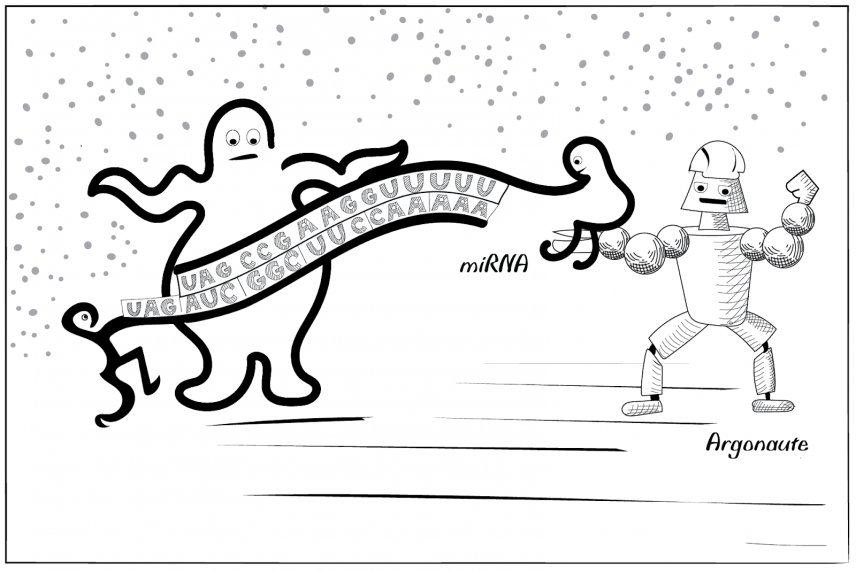
Jennifer Cook-Chrysos/Whitehead Institute
MicroRNAs don’t travel alone: they pair up with a large protein called Argonaute, which protects them from destructive enzymes called nucleases in the cell. Because of this protective protein, microRNAs can live in the cell for up to a week, floating around and targeting mRNAs for degradation.
When it’s finally time for a microRNA to go away — for example, if it is no longer needed to control the amount of a certain mRNA transcript — the cell has a surprising way for it to be destroyed.
Yet another kind of RNA binds to the microRNA and leads to the Argonaute protein being degraded. The microRNA, now exposed in the cell, is destroyed by nucleases.
The many faces of RNA
The cell contains many other types of RNA, with different lengths, shapes and purposes.

Jennifer Cook-Chrysos/Whitehead Institute
- Transfer RNA — Helps to translate mRNA into protein. Each one carries one protein building block that pairs to a sequence in the mRNA being translated.
- Ribosomal RNA — Combines with certain proteins to form molecular machines called ribosomes, which translate mRNA.
- Double stranded RNA — Makes up viral genomes. Each is bound to another complementary RNA strand. (This is the RNA that makes up the COVID-19 genome.)
- Small interfering RNA — Helps to speed up degradation of mRNA so it does not get translated into more protein. A double-stranded regulatory RNA.
- PIWI-interacting RNA — Regulates the expression of transposons — also called “jumping genes” — by targeting those genes in sperm and egg cells.
- Circular RNA — Forms a closed loop. Unlike other single stranded RNA that remains linear, this RNA’s ends join together to become a circle.
- Long noncoding RNA — Is 200 or more building blocks (letters) long and does not code for a protein.
When good RNA goes bad
A note on RNA shape: like a piece of sticky tape, single-stranded RNA can fold over on itself, creating twists and loops and hairpin-like sections. This is called its secondary structure.
This can be especially useful, for example, for certain viruses that use RNA to store their genetic information instead of DNA. By modifying their secondary structures, these organisms can create many different proteins from a small stretch of RNA.
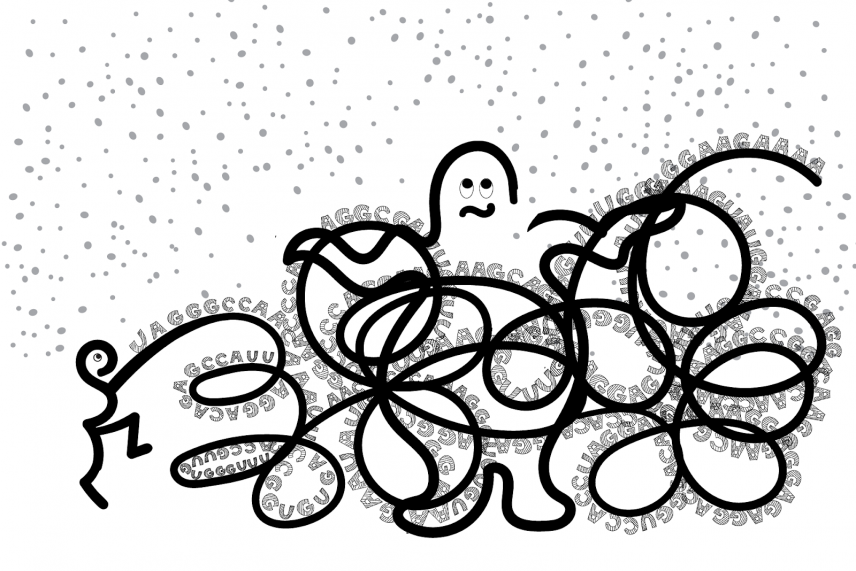
Jennifer Cook-Chrysos/Whitehead Institute
It’s normal for RNA to have a few bends and loops, but sometimes too many tangled sections can cause problems in the cell. This can be the result of genetic mutations leading to extra long RNAs.
These aggregates may contribute to diseases such as Huntington’s disease or ALS. Scientists are working to develop drugs to target these RNA aggregates.
RNA research
Researchers at Whitehead Institute are studying RNAs to find out more about their structures, their functions, and how to tackle diseases and disorders that involve RNA. Read about some of their research here.
Contact
Communications and Public Affairs
Phone: 617-452-4630
Email: newsroom@wi.mit.edu


